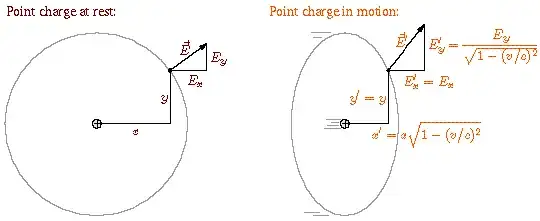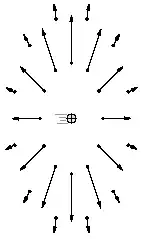I was going through this link
http://physics.weber.edu/schroeder/mrr/MRRtalk.html
There it says
Now consider the electrostatic field of a point charge at rest, shown at left below. At every point on the circle (actually a sphere), the field has the same strength and points directly away from the particle.
Field of a point charge, at rest and moving to the right If we put this system in motion to the right (shown at right), two things happen. The first is that the sphere gets length-contracted, flattened in the direction of motion. The second is that the components of the field perpendicular to the motion get stretched by the very same Lorentz factor. Therefore the field still points directly away from the point charge, but it's not the same in all directions: it's weaker in front of and behind the particle, and stronger to the sides, as shown below.
Field vectors around a point charge moving to the right
But I am not able to understand why the field perpendicular to the motion of charge gets stretched? Isn't it completely independent of how the field in other direction spreads? Shouldn't the $y$ direction always have?
$\LARGE\frac{E}{4\pi\epsilon_0 r^{2}}$

